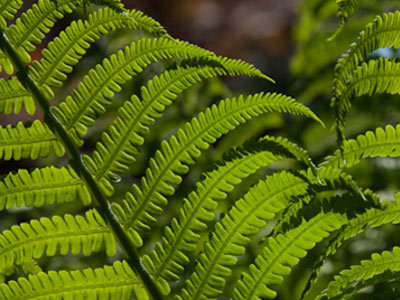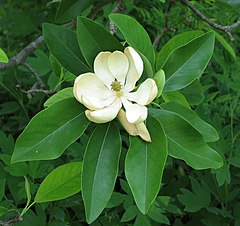Charophyceans
Charophyceans are the green algae that are most closely related to plants. They have cell walls that are made of cellulose and have the presence of chlorophylls a and b within the chloroplasts. Charophyceans are equipped with rose-shaped arrays of proteins that synthesize the cellulose microfibrils of the cell walls. They also have peroxisomes that make them closely related to land plants. They have flagellated sperm cells and are involved in the cell division formation of phragmoplast.
Bryophytes
Bryophytes have three separate phyla: liverworts, hornworts, and mosses. Mosses are the most familiar in bryophytes. It is a nonvascular plant with gametophyte being the dominate generation in their life cycles. The lack conducting tissues that help them distribute water and organic compounds within their thick tissues. Because they do not have lignified vascular tissues, their growth height is limited. These plants are common in moist alpine, boreal temperate, tropical forests and wetlands.
Pteridophytes
Pteridophytes are seedless vascular plants and have roots with lignified vascular tissue. Because their vascular system resembles earlier vascular plants, this suggests that their roots evolved from the subterranean portions of stems of ancient vascular plants. There are two phyla involved: Lycophyta and Pterophyta (ferns, whisk ferns, horsetails). For reproduction, sporophyte dominates its life cycle. Megaspores develop into female gametophytes bearing archegonia while microspores develop into male gametophytes with antheridia. Water ferns are the only heterosporous species. Because of their swimming sperm and fragile gametophytes, pteridophytes are most common in relatively damp habitats.
Gymnosperms
Gymnosperms lack enclosed chambers, also known as ovaries, where angiosperm ovules and seeds develop. Another name for gymnosperms is the naked seed. These seed bearing plants include conifers, pines, ginkos, and cycads. Most conifers are evergreens, retaining their leaves throughout the year. They are adapted to dry conditions and are amongst the largest and oldest organisms on Earth. Conifers are heterosporous. Both male and female gametophytes develop from different types of spores by separate cones. If a seed lands in a habitable place and beings to germinate, then the embryo emerges as a pine seedling.
Angiosperms
Angiosperms are also known as flowering plants. Angiosperms are vascular plants with seeds. They are divided into two main classes which differ in anatomical and morphological details: the monocots and the dicots. The flower in the angiosperm structure is specialized for reproduction and includes four circles of modified leaves: sepals, petals, stamens, and carpels. After reproduction, the fruit is a mature ovary which the seeds of the angiosperm are dispersed by wind or animals. They are involved in coevolution where the pollinator-plant relationship is cause of the diversity of flowers. They play an important role in terrestrial ecosystems because animals pollinate the flowers while animals other animals transport the seeds to new and different locations. Angiosperms play an important role in agriculture because if provides nearly all our food. All our fruit and vegetable crops are angiosperms.
Source: Campbell book




No comments:
Post a Comment